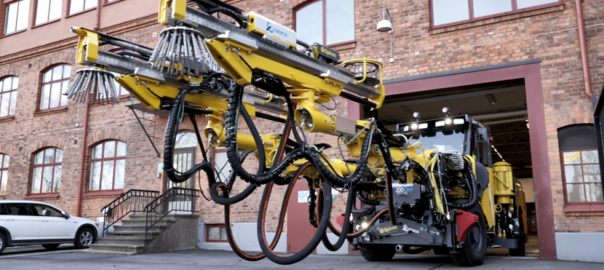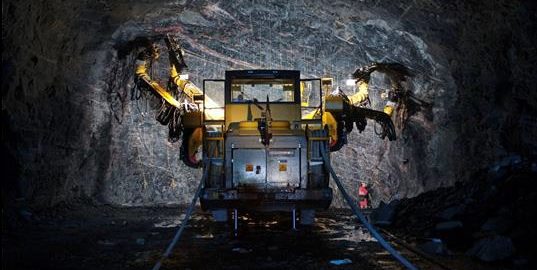Orica and Epiroc Rock Drills say they have successfully co-developed a prototype of the world’s first semi-automated explosives delivery system.
A sought-after technology by customers in the underground hard-rock mining sector, Avatel™ will deliver a completely new way of approaching development blasting operations by eliminating charge crew exposure at the face, according to the companies.
Orica and Epiroc expect to commence commissioning on Avatel, the first-of-its-kind, industry-driven explosives delivery system, in the coming weeks, meaning the solution could be deployed at underground mine sites as early as the end of 2021.
The solution provides safe access for an operator in cab to execute the development cycle while reducing the reliance on costly, time-consuming and, at times, ineffective controls put in place to manage the risks to personnel working in one of the highest risk areas of an underground mine, the companies said.
Orica’s Chief Commercial and Technology Officer, Angus Melbourne, said: “The mining industry is moving rapidly toward a digitally integrated and automated future, and Avatel will fulfil our shared vision of developing safer and more productive blasting solutions.
“Achieving this significant development milestone, despite COVID-19 disruptions, shows the strength of our collaboration with Epiroc and our collective ability to deliver the future of mining.”
Epiroc’s President Underground division, Sami Niiranen, said: “With this partnership, we continue to raise the safety bar by combining world leading technologies that will make a difference in underground mines.
“The Avatel prototype represents the first step towards autonomous charging – a vital step in the journey toward safer and more productive blasting operations underground. We are looking forward to bringing this ground-breaking solution to customers worldwide.”
A key enabling technology of Avatel and Orica’s automation vision is WebGen™, Orica’s fully wireless initiation system. When combined with Orica’s LOADPlus™ smart control system, specifically designed on-board storage, assembly, digital encoding capability and Subtek™ Control bulk emulsion, Avatel provides customers with complete and repeatable control over blast energy from design through to execution, the companies say.
Built on the foundation of Epiroc’s Boomer M2 carrier, and integrated with Orica’s latest explosives technology, Avatel is a twin boom, semi-autonomous and fully mechanised development charging solution that, Epiroc and Orica says, allows a single operator to complete the entire charging cycle from the safety of Epiroc’s enclosed ROPS and FOPS certified cabin.
“Avatel is equipped with the most sophisticated version of Epiroc’s acclaimed Rig Control System (version 5),” they said.
“Through its intuitive interface, with a large touchscreen and dual multifunctional joysticks, and, combined with Epiroc´s computer assisted boom positioning features, it can be easily handled. Integrated with Orica’s LOADPlus, charge plans and other important data will be communicated between the systems.”
The design of Avatel builds on Epiroc’s application design experience, further adapted to match conditions this new solution will face. Future developments can be extended to other Epiroc carriers including battery drivelines, they say.
Other advantages include flexibility at the face through Epiroc´s dual diesel/electric plug-in power solution.
“The convergence of these technologies ultimately ensures that the right explosives will be safely delivered into the right holes and given the right timing to achieve optimal efficiencies and the desired outcomes,” the companies said.
Extensive trials of Avatel will take place throughout 2021, before the first commercially available systems are expected to enter service.








